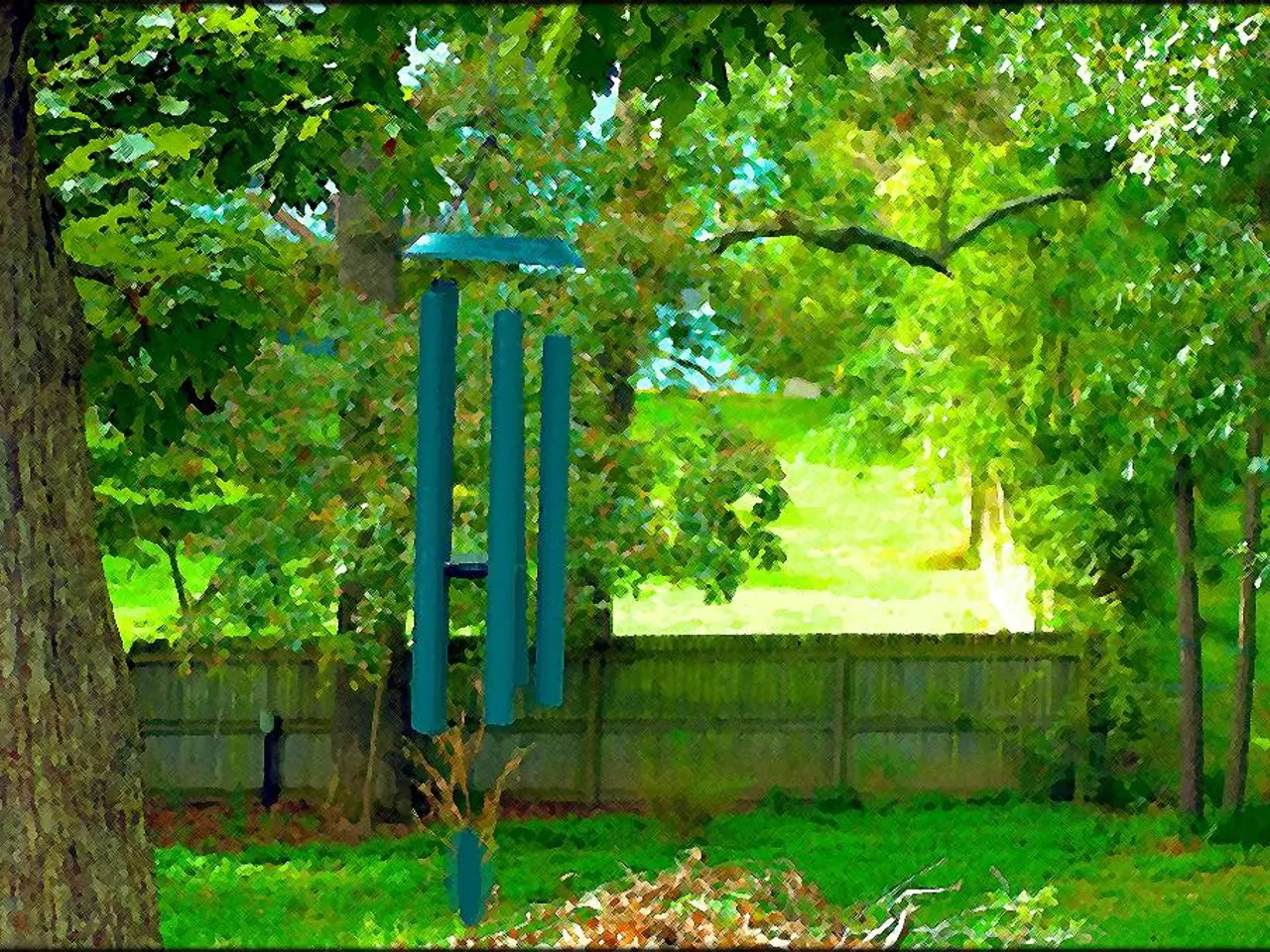Strategies for Installing a Fence Around a Tree: Explored and Illustrated
Building a fence around a tree can be a delicate task, requiring careful consideration of the tree's size, roots, aesthetics, and purpose, as well as legal factors and fencing materials. Here's a guide to help you navigate this process.
Protecting the Tree
To avoid damaging the tree, it's essential to keep fence posts at a safe distance from the trunk and roots. One approach is to use wire fencing cut to size and wrap it around the tree without nails or screws directly into the trunk. This method protects the tree while providing a barrier.
Measuring the tree size and root spread is crucial. Fencing posts should be placed outside the root critical zone to prevent cutting major roots.
Choosing the Right Fence
The choice of fence type depends on the tree's aesthetics, purpose, and the surrounding environment. For example, lattice panels with climbing plants offer privacy and charm without looking harsh, while bamboo roll fencing is flexible and blends well with nature. Wire mesh fencing around a tree trunk can protect it without obstructing air and light.
For yard containment or visual appeal, picket or split rail fences are alternatives that do not require post placement too close to the tree. If privacy is a concern, lattice with plants or horizontal slat fences can be installed at a distance from the tree to avoid damage while maintaining the desired screening effect.
Considering Legal Factors
Before building, verify local ordinances and any Homeowners Association (HOA) rules regarding fence materials, height, location, and style. These often govern where fences can be placed and how they look to maintain neighborhood aesthetics. Confirm property lines to avoid disputes and adhere to height restrictions.
Special Methods
- Sandwich Method: When using the sandwich method, choose a fence type that does not touch the ground except at the posts (e.g., a picket fence). If the tree roots have a large spread and are close to the surface, it will be harder to place the fence's posts near the tree without damaging the roots.
- Tree as Fence Post: Using the tree as a fence post can potentially expose the tree to diseases and other problems. To avoid these issues, a treated chunk of wood or metal should be placed between the fence and the tree's bark, with the fence secured to the wood or metal instead.
- Windows in the Fence: Creating windows in the fence allows for tree accommodation without altering the path. However, this method may not be suitable for privacy, especially if windows are at a lower height.
- Sandwiching the Tree: Building the fence outwards from the two extreme sides of the tree, with the tree in between the fence's ends, is a method that works well when the tree is right in the middle of the fence line. This method allows the tree to elegantly become a part of the fence.
Summary
By considering these factors, you can build a non-damaging fence around a tree that suits your needs and complies with regulations. Here's a summary table of considerations:
| Factor | Recommendation | Details | |--------------------|-------------------------------------------------|------------------------------------------------------------| | Tree size & roots | Fence at a distance avoiding root zone | Place posts outside critical root spread to prevent damage | | Fencing materials | Use wire mesh, lattice, bamboo roll, wood | Choose flexible, lightweight options to avoid harm | | Installation method| Avoid digging near roots, no nailing in trunk | Wrap fencing around trunk without penetrating bark | | Aesthetic/design | Lattice with plants, horizontal slats, bamboo | Provides privacy and natural look | | Purpose | Protection or privacy | Select fence type accordingly | | Legal factors | Check local codes, HOA rules | Verify fencing height, placement, style restrictions |
By combining these considerations, you can build a fence around a tree that is both functional and aesthetically pleasing.
Incorporating the suggested guide, one can create a home-and-garden setup that blends a lifestyle favoring greenery and gardening, with a fence, ensuring the tree remains healthy. For instance, a wire mesh fence wrapped around a tree can both protect the tree and serve as a part of the home-and-garden endeavor. Furthermore, when planning our home-and-garden design, selecting a fence type such as lattice panels with climbing plants or bamboo roll fencing can offer privacy and maintain a harmonious connection with the garden while ensuring the tree is not obstructed.




